Bananas are one of the healthiest foods around, packed full of vitamins and minerals and just made to be carried around for healthy snacking during a busy day.
While processed diet foods have to be purchased in small, expensive packages, bananas have the benefit of being good for your body just as they are.
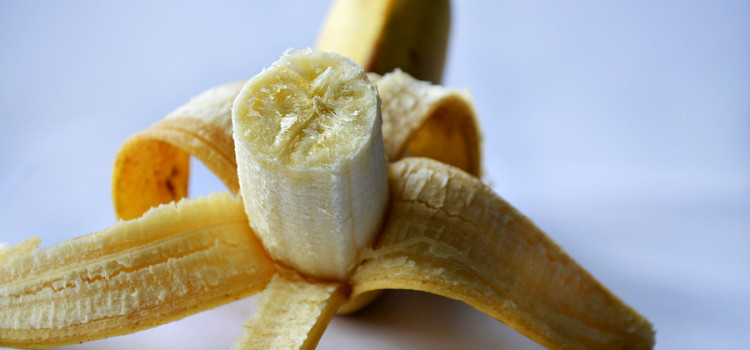
Throw a banana in your bag and have it on hand anytime you’re feeling hungry. At 30 grams of carbohydrates and just 110 calories, its sweet flavor make it an easy treat not to be overlooked.
How Many Carbs are in a Banana?
One medium-sized banana (about 4 oz or 120 g) contains 27 g of total carbohydrates. While a simplistic take on that would be to black-list bananas—as many on “no-carb” diets have done in the past—most nutritionists would say that when it comes to carbs and bananas, the issue is not black and white.
Ketogenic diets aside, a no-carb lifestyle is attractive to some because it seems like an easy answer: avoid all carbohydrates and lose weight. While truly “simple” carbohydrates (such as those found in processed breads and cereals) should be limited for optimum health, in actuality there are plenty of foods that contain certain carbohydrates that wield important health benefits.
Bananas fall into that category. When you eat a banana, those carbohydrates—which include fiber and resistant starch—come with an excellent source of potassium, manganese, and vitamin B6. Moreover, slightly unripe “green” bananas are an even better source of starch and fiber, and provide additional beneficial compounds.
The take-home lesson is this: carbs are not the be-all and end-all to losing weight, and losing weight is certainly not the sole purpose of healthy living. It’s all about maintaining a healthy balance, and one of the best ways to do that is to learn to look past the numbers.
How Many Calories are in a Banana?
The easy answer: one medium-sized banana contains 110 calories. But what does that mean for you?
Calories represent a common way we keep track of how much energy is in the food we eat. We all have a daily minimum of calories that we absolutely must meet in order to survive, and it depends on a number of factors—gender, age, height, weight, physical activity, genetics, and more. Calories are important, but focusing only on them oversimplifies healthy living: obsession over calorie counting can be self-defeating, especially when you consider that many dieters have the impulse to go too far under the minimum, which actually hurts the potential for weight management. Yes, you want to avoid eating an entire day’s allotment of calories in a single dessert binge. But when it comes to foods chock-full of nutrients and health benefits that your body needs, prioritizing nutrition over calorie-counting actually better supports weight loss and maintenance.
That said, when making your way in a healthier lifestyle, it can be good to get a general idea of how many calories you typically eat in a day and how often you could see yourself exercising. Calories are energy, and the way we burn that energy is through physical activity. Back when we had to hunt and gather for our food, this activity was taken for granted. Today you may find that unless your job requires a lot of physical effort, you’ll need to pick up the slack with your own exercise regimens.
Bananas aren’t a strain on your daily caloric intake, only “using up” about 1/20th of the average person’s needs. The calories from one banana can be burned in 10 minutes of swimming or jogging or 20 minutes of walking. Better yet, bananas are a great standard: this small but filling, sweet but healthy snack requires an average of 15 minutes of exercise, but a less nutritious chocolate croissant would require nearly four times that. There are certainly more advantages to just sticking with the banana, regardless of the “anti” hype.
Banana Nutrition
We’re going to start with the basics, brought to you by the United States Department of Agriculture (USDA). If you’re familiar with those black and white “Nutrition Facts” labels you see on foods at the grocery store, just imagine one of them stuck to a banana. This is what it would say:
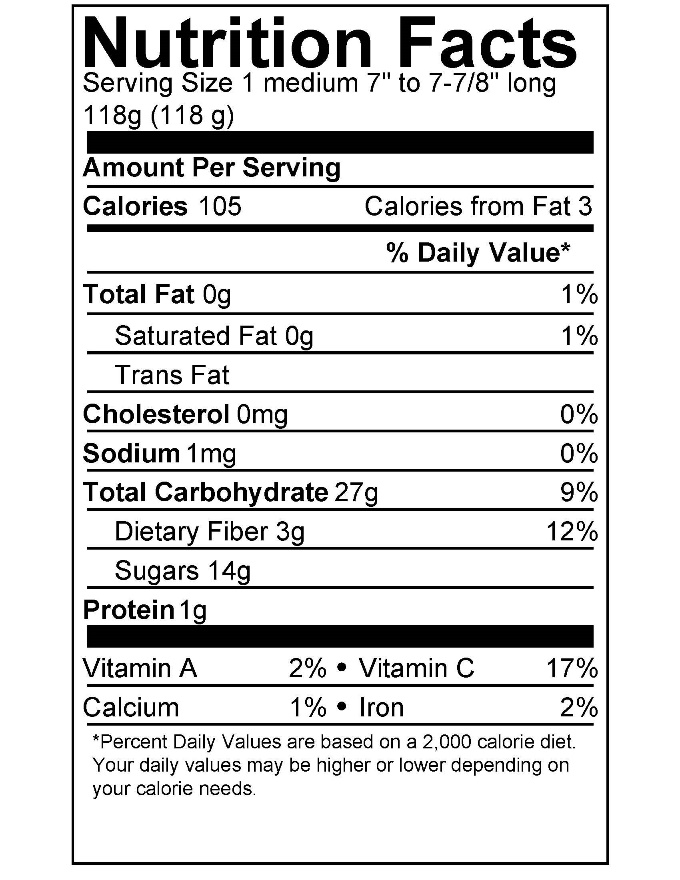
But to make sense of all that, it needs to be put into context. Bananas are high in antioxidants such as vitamin C, manganese, and carotenoids that can protect the body from free radicals, with which we come into contact with every day, from air, food, sun rays, and even just basic metabolism. In addition, bananas are a great source of potassium (critical for healthy blood pressure and muscle function) and pectin (a form of fiber), as well as vitamin B6 (needed for healthy nerve function and to prevent bone loss and reduce the risk of cardiovascular disease).
That’s all good news, and so is the fact that bananas are very low in sodium and have no “bad” fats or cholesterol. What may seem like slightly less good news is that a lot of the calories in bananas come from sugars; however, those sugars are natural and balanced, and are cradled in a bed of fiber and starches that largely outweigh negative effects. Too often we choose far greater amounts of hidden refined sugars in overly processed foods that won’t give us the nutrition that’s packed into a single banana.
More good news: the USDA recommends that the average adult eat a minimum of 2 servings of fruit per day, and a medium banana fits the bill.
Banana Peel
Banana peels are much like bananas in nutritional value, providing magnesium, potassium, fiber, protein, and vitamin B6, though in somewhat different proportions. Plus, because they are not as sweet as banana flesh, they can be even more versatile in foods—making a great addition not only to sweet dishes, but also to savory.
However, do make sure to wash your banana carefully before you use the peel. While pesticides on the outside may not have mattered when you were just eating the fruit, now this is another story.
Final Thoughts
Some ground rules to keep our systems in check:
- Bananas are excellent, portable snacks for almost any time of day. However, they don’t have enough fat or protein to count as a full meal for most adults.
- When it comes to workouts, it is better to have them before rather than after, unless you tack on a good source of protein for adequate muscle recovery.
- If you are a diabetic, be sure to count the sugar content of bananas (about 50% of total carbohydrates of a fully ripe banana).
- For additional banana benefits, go for the green.
- Eating a lot of bananas without taking good enough care of your teeth can promote tooth decay due to the sugars. Since your mouth is full of blood vessels, this can impact your overall health to a surprising degree. Brush your teeth and floss, folks!
Learn more about the five foods you should NEVER eat to lose weight and feel healthier!
References
- Mayo Clinic. Could a low-carb diet give you an edge in losing weight? Help you keep weight off permanently? Here’s what you need to know about the low-carb diet. In Healthy Lifestyle: Weight Loss. 20 Sep 2014. Retrieved 17 May 2015
- National Health Service (NHS). Understanding calories. Retrieved 17 May 2015.
- RationalWiki. Low-carb diet. 08 Jan 2015. Retrieved 17 May 2015.
- Szalay J. Bananas: Health Benefits, Risks & Nutrition Facts. Live Science. 29 Sep 2014. Retrieved 17 May 2015.
- United States Department of Agriculture (USDA) National Nutrient Database. Full Report (All Nutrients): 09040, Bananas, raw. Retrieved 17 May 2015.
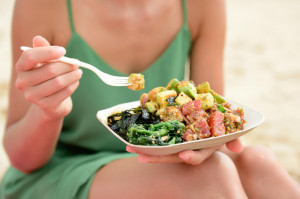
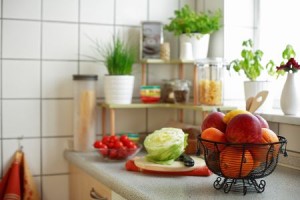
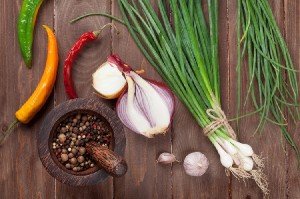

Hi Ossie
I’m a truck driver and have no time to prepare meals or even go shopping, I just eat in on the journey.
I am looking for some healthy snack combinations to help me loose weight, i can eat most things so some ideas would be very helpfull?
Thanks
Rupert
Hi, Rupert, and thanks for your service – many of us would be nothing and nowhere without truck-drivers! Below is a list of some ideas – some you can buy at truckstops, etc., and others you can whip up in advance:
•Fresh and dried fruit
•Cut raw vegetables
•Oven-baked vegetable chips
•Nuts and seeds
•Trail mix combinations of nuts, seeds, and dried fruit
•Sandwiches – good breads with nut butters, hummus and similar spreads, tahini, canned or smoked fish, cheese, homemade “cold cuts” from fresh meats, egg salad, etc.
•Whole grain or Paleo crackers plus any of the above
•Hard-boiled eggs
•Sliced or string cheese
•Cottage cheese
•Yogurt
•Milk (dairy or vegetal), plain or flavored with cocoa powder and a recommended sweetener
•Hearty soup in a thermos (2-3 food groups, i.e. meat or legume, vegetable, whole grain)
•Hearty smoothie/shake in a thermos (2-3 food groups, i.e. fruit/vegetable, dairy/vegan, seeds)
•Edamame or other legume/pulse snacks
•Whole grain or Paleo cereal or granola (cold in small sealable bag, cooked in thermos)
•Canned beans
•Prepared healthy foods in containers – from leftovers or prepared the night or weekend before.
•Homemade whole-food muffins or bars
•Popped grains, i.e. organic popcorn, sorghum, quinoa
Great article about bananas. What about cherries?
Hi, cynloucyn. Cherries are excellent as well. They are similar to bananas in terms of carbohydrates, protein, and minerals per calorie; they are a little lower in vitamins, though higher in phytonutrients including carotenoids.
Hi just signed up still unsure what the 5 foods are what not to have, can anyone tell me thanks
Hi, Tinapig, and welcome! The 5 foods are examples of those that are overprocessed versions of those that should be healthy, but have been manipulated into being particularly harmful to your goals here. Note that they are only examples, and many other popular foods have been similarly affected, so it is important to look for better versions, endeavor to eat whole foods as much as possible, and always be aware of how a food is made.
1. Regular “whole wheat” bread – this often also contains refined flours, so it is preferred to select “100% whole” grain products (wheat or other). Even with these products, be sure to read the label and avoid hydrogenated fats or similar ingredients such as mono- and diglycerides.
2. Regular margarine – this is often made from chemically altered fats that create health risks similar to those people are trying to avoid by eating a plant-based product. If you must use a hardened oil, t is better to choose those based on coconut oil, and otherwise to use healthy liquid oils, such as olive, as much as possible.
3. Artificial sweeteners – you can read more about this here: https://www.trimdownclub.com/the-best-way-to-sweeten-your-tea-2.
4. Regular orange juice – If it is in a store, it is likely to have been stripped of what makes it healthy. Even if vitamins etc. have been added back in, it really is not the same. Fresh-squeezed is the way to go.
5. Conventional and overly processed soy – organic is fine, and minimally processed items such as tofu, yogurt, and milk, as well as fermented items such as tempeh and natto are fine. However, most pre-packaged mock meats tend to be a problem.
Great info on bananas, thanks
I drink coffee with flavored creamer , how can I replace that?
Try “milks” based on the flavoring – for example, hazelnut milk, coconut milk (the beverage type) or almond milk are great.
When is the best time of the day to exercise?? Before or after breakfast?
Hi, jgramof7. It’s up to you – either way it’s fine as long as you allow yourself plenty of time after breakfast to digest your meal before exercising.
I have the first 3 of the 5 foods,what are the last 2.
Hi, Sharon Busch. Are you referring to the “5 foods to avoid”? If so, the following is the entire list:
1. Artificial sweeteners
2. Conventional and overly processed soy
3. Regular store-bought fruit juice
4. Regular whole wheat bread
5. Regular margarine
They are all just examples of popular foods that are supposed to be good choices, but have been manipulated into being anything but healthy. There are many others like them. We encourage you to find better versions, based on whole food principles.
Hello what can I use to sweeten my cup of Tea?,(I am using Splenda at the moment), I have stopped all sugar and cut back on bread and on breakfast cereals I now use Honey, or should I use Honey in my Tea? I have increased my exercise to a good walk and/or cycling 25-35 miles at least every other day and the weight is slowly going, enjoying it all at the mo, regards Alan
Hi, Alan. You can find the guidance you’re looking for here – https://www.trimdownclub.com/the-best-way-to-sweeten-your-tea-2 (honey is fine, by the way, especially if it is pure and/or raw).
Fantastic news about the exercise, and congratulations on your loss so far. If you have any other questions, we’re happy to help in whatever way we can. 🙂